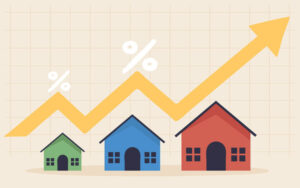
With the prices of existing homes remaining largely unaffordable, the number of available home listings shrinking, and record high mortgage rates, potential homebuyers are looking to newly constructed homes to fill the gap. As a result, builders are expected to meet the rising demand for new homes while also dealing with soaring construction costs. The solution? New homes are being built smaller and much closer together than before.
 It’s important to note that America’s housing affordability crisis has not surfaced suddenly. Many experts believe the problem snowballed since the Great Recession and has reached a precarious situation – at present, many families earning the median annual income can no longer afford to buy a home in any of the major markets, not to mention younger, first-time homebuyers.
It’s important to note that America’s housing affordability crisis has not surfaced suddenly. Many experts believe the problem snowballed since the Great Recession and has reached a precarious situation – at present, many families earning the median annual income can no longer afford to buy a home in any of the major markets, not to mention younger, first-time homebuyers.
A shift has occurred in the conventional thought process regarding what a home should look like and how it should function. For example, more emphasis is being placed on elements such as natural light rather than a targeted bedroom count or specific floor plan. And to address the smaller footprint, builders are allocating more space to heavily trafficked areas. Instead of building a formal dining room, the focus is shifting to larger kitchen islands with seating, and primary bedrooms with walk-in closets are being sacrificed for an additional small bedroom or home office.
Not only are builders addressing affordability for buyers, but they’re also doing so for themselves. Relative to 2019 levels, costs for builders are still up around 35%. By reducing the size of the homes that are built, material costs can be kept at a more manageable level.
Fortunately, builders' ability to pivot quickly amid the higher interest rate environment should be good news for hopeful home buyers. Small and micro homes help keep housing prices affordable, require fewer materials to build and lower utilities to live comfortably, while also encouraging the forward-thinking concept of living with less “stuff.”